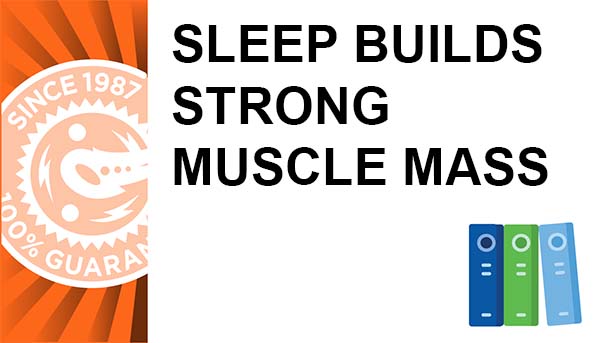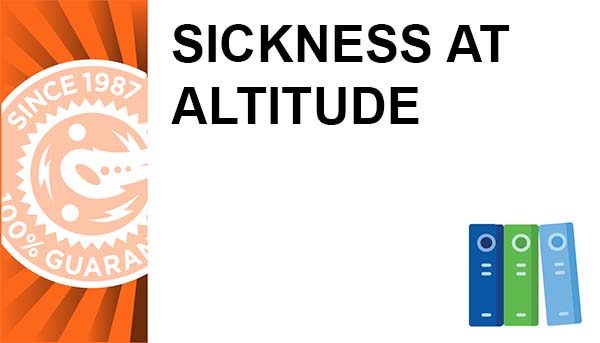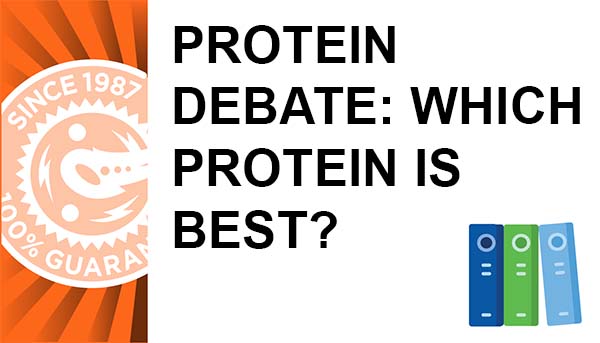By William Misner Ph.D.
Consuming as little as 40-50 grams or slightly over 1.5-ounce fructose over a 10 hour period may increase blood pressure, blood triglycerides, reduced insulin binding & insulin sensitivity, and increase fat weight gain. The disturbing fact is that the general population has been consuming more than that amount every day for the past 34 years. Total fructose consumed per person from combined consumption of sucrose and high-fructose corn syrup has increased by +26%, from 64 g/d in 1970 to 81 g/d in 1997. As Body Mass Index increases (fat weight gain), the increased risk of insulin resistance, impaired glucose tolerance, hyperinsulinemia, hypertriacylglycerolemia, and hypertension may occur.
Fructose consumption as reported from animal studies (1) has been associated with:
INCREASED LACTATE
INSULIN RESISTANCE
IMPAIRED GLUCOSE TOLERANCE
HYPERINSULINEMIA
HYPERTRIACYLGLYCEROLEMIA
HYPERTENSION
THE PATHWAY: HOW THE LIVER DISPOSES OF FRUCTOSE
Both plasma insulin and leptin act in the central nervous system in the long-term regulation of energy homeostasis. Because fructose does not stimulate insulin secretion from pancreatic cells, the consumption of foods and beverages containing fructose produces smaller postprandial insulin excursions than does consumption of glucose-containing carbohydrate. Because leptin production is regulated by insulin responses to meals, fructose consumption also reduces circulating leptin concentrations. The combined effects of lowered circulating leptin and insulin in individuals who consume diets that are high in dietary fructose could therefore increase the likelihood of WEIGHT GAIN with its associated metabolic disorders. Fructose, compared with glucose, is preferentially metabolized to lipid in the liver.
Hepatic fructose metabolism begins with phosphorylation by fructokinase. Fructose carbon enters the glycolytic pathway at the triose phosphate level (dihydroxyacetone phosphate and glyceraldehyde-3-phosphate). Thus, fructose bypasses the major control point by which glucose carbon enters glycolysis (phosphofructokinase), where glucose metabolism is limited by feedback inhibition by citrate and ATP. This allows fructose to serve as an unregulated source of both glycerol-3-phosphate and acetyl-CoA for hepatic lipogenesis. P, phosphate.
The hepatic metabolism of fructose has important effects on both glucose and lipid metabolism. Absorbed fructose is delivered to the liver via the portal vein. Fructose is phosphorylated in the liver by adenosine triphosphate to form fructose-1-phosphate. The reaction is catalyzed by the enzyme fructokinase. Fructose-1-phosphate is split by aldolase B into glyceraldehyde and dihydroxyacetone phosphate. Both can be converted to glyceraldehyde-3-phosphate. Thus, the fructose molecule is metabolized into 2 triose phosphates that bypass the main rate-controlling step in glycolysis, 6-phosphofructokinase. By contrast, hepatic glucose metabolism is limited by the capacity to store glucose as glycogen and, more importantly, by the inhibition of glycolysis and further glucose uptake resulting from the effects of citrate and ATP to inhibit phosphofructokinase. The products of fructose metabolism in the glycolytic pathway of the liver are glucose, glycogen, lactate, and pyruvate. Because fructose uptake by the liver is not inhibited at the level of phosphofructokinase, fructose consumption results in LARGER INCREASES OF CIRCULATING LACTATE than does consumption of a comparable amount of glucose.
Elliott et al., (1) hallmark review of the literature reported several harmful effects from habitual consuming of processed fructose-containing sweetener agents. They report that regular consumption of processed fructose negatively impacts blood pressure, blood lipid triglycerides, insulin resistance and glucose metabolism, with fat weight gain proportionate to time and total dose:
| DIETARY FRUCTOSE OR FRUCTOSE-CONTAINING SWEETENERS NEGATIVELY EFFECT BLOOD PRESSURE | ||||
| Species | Amount fed | Study Length | Effects on blood pressure | Reference |
| Rats | 35% of energy as fructose and 35% as starch or 70% starch or 59% fat | 4 wk | Increased mean arterial pressure with fructose | (2) |
| Rats | 5%, 10%, or 20% fructose in drinking water | 1 wk | Fructose-induced hypertension with 10% solution by end of 1 wk | (3) |
| Rats | 66% of energy as fructose with or without sodium chloride | 3 wk | Systolic BP increased in fructose-fed rats receiving the high-salt diet | (4) |
| Dogs | 60% of energy as fructose or dextrose | 20-28 d | Mean arterial pressure increased with fructose | (5) |
| Humans (males with or without hyperinsulinemia) | 0%, 7.5%, or 15% of energy as fructose | 5 wk each | Systolic BP slightly higher with 0% fructose; no difference in diastolic BP | (6) |
| 1BP, blood pressure. | ||||
| DIETARY FRUCTOSE OR FRUCTOSE-CONTAINING SWEETENERS NEGATIVELY EFFECT TRIGLYCERIDES | ||||
| Species | Amount fed | Study Length | Effects on lipids | Reference |
| Rats | 68% fructose | 100 d | Increased TGs that were reversed when a chow diet was reintroduced | (7) |
| Rats (copper-replete or -deficient) | Fructose or starch as the sole carbohydrate source | 4 wk | Increased TGs with fructose; increased total cholesterol with fructose plus copper | (8) |
| Dogs | 60% of energy as fructose or dextrose | 20-28 d | Increased fasting TGs with fructose | (9) |
| Humans (males with or without hyperinsulinemia) | 0%, 7.5%, or 15% of energy as fructose | 5 wk each | TGs in hyperinsulinemic men increased as fructose increased | (10) |
| Humans (males with or without hyperinsulinemia) | 20% of energy as fructose or cornstarch | 5 wk each | TGs increased in both groups with fructose but not with cornstarch | (11) |
| Humans (males and females aged 13-55 y) | Consumed either sucrose, fructose, or xylitol | 2 y | No differences in plasma cholesterol or TGs | (12) |
| Humans (males and females) | 40 g fat with or without 50 g fructose | Only 10 hours | Fat plus fructose led to higher postprandial TGs; increased TGs correlated with baseline TGs | (13) |
| Humans (males and females with or without type 2 diabetes) | 1 g fat/kg body wt plus 0.75 g/kg body wt of either fructose or starch | Only 6 hours | TGs rose more slowly but were higher after fructose than after starch 4-6 h after the meal; increased TGs positively correlated with fasting insulin | (14) |
| Humans (males and females) | 17% of energy as either fructose or glucose | 6 wk | Higher fasting and postprandial TGs in older men with fructose | (15) |
| Humans (females) | 30% of energy as fructose or glucose with 3 meals | 24 hours | Higher postprandial TGs with fructose and higher fasting TGs the following day | (16) |
| 1TG, triacylglycerol. | ||||
| DIETARY FRUCTOSE OR FRUCTOSE-CONTAINING SWEETENERS NEGATIVELY EFFECT FAT WEIGHT GAIN | ||||
| Species | Amount fed | Length study | Effects on weight | Reference |
| Rats | 15% of energy as fructose or cornstarch | 15 mo | No differences in body weight or relative food intake | (26) |
| Hamsters | 60% fructose or sucrose | 2 wk | Increased energy intake, weight gain, and adiposity with fructose | (27) |
| Humans (males and females) | 1150 g soda sweetened with HFCS ( 80 g fructose) or artificial sweetener | 3 wk | Increased energy intake and body weight with soda sweetened with HFCS | (28) |
| Humans (middle-aged males) | 50-60 g fructose/d | 24 wk | Increased body weight | (29) |
| Humans (overweight males and females) | 28% of energy as sucrose or artificial sweetener | 10 wk | Increased energy intake, body weight, and fat mass with sucrose intake | (30) |
| 1HFCS, high-fructose corn syrup. | ||||
CONCLUSION
Only a modest amount of processed fructose sugar is associated with harmful consequences to human subjects and more precarious interventions imposed in animal research. Healthy normal athletes should NOT therefore impose a known health risk during exercise or during sedentary mealtimes by consuming a processed fructose-sugar sweetener.
References
(1) Fructose, weight gain, and the insulin resistance syndrome, Sharon S Elliott, Nancy L Keim, Judith S Stern, Karen Teff, Peter J Havel, American Journal of Clinical Nutrition, Vol. 76, No. 5, 9 11-922, November 2002. http://www.ajcn.org/cgi/content/full/76/5/911 (2) Storlien LH, Oakes ND, Pan DA, Kusunoki M, Jenkins AB. Syndromes of insulin resistance in the rat. Inducement by diet and amelioration with benfluorex. Diabetes 1993;42:457-62. (3) Cavadini C, Siega-Riz AM, Popkin BM. US adolescent food intake trends from 1965 to 1996. Arch Dis Child 2000;83:18-24. (4) Takagawa Y, Berger ME, Hori MT, Tuck ML, Golub MS. Long-term fructose feeding impairs vascular relaxation in rat mesenteric arteries. Am J Hypertens 2001;14:811-7. (5) Martinez FJ, Rizza RA, Romero JC. High-fructose feeding elicits insulin resistance, hyperinsulinism, and hypertension in normal mongrel dogs. Hypertension 1994;23:456-63. (6) Hallfrisch J, Reiser S, Prather ES. Blood lipid distribution of hyperinsulinemic men consuming three levels of fructose. Am J Clin Nutr 1983;37:740-8. (7) Herman RH, Zakim D, Stifel FB. Effect of diet on lipid metabolism in experimental animals and man. Fed Proc 1970;29:1302-7. (8) Fields M, Lewis CG. Dietary fructose but not starch is responsible for hyperlipidemia associated with copper deficiency in rats: effect of high-fat diet. J Am Coll Nutr 1999;18:83-7. (9) Martinez FJ, Rizza RA, Romero JC. High-fructose feeding elicits insulin resistance, hyperinsulinism, and hypertension in normal mongrel dogs. Hypertension 1994;23:456-63. (10) Hallfrisch J, Reiser S, Prather ES. Blood lipid distribution of hyperinsulinemic men consuming three levels of fructose. Am J Clin Nutr 1983;37:740-8. Reiser S, Powell AS, Scholfield DJ, Panda P, Fields M, Canary JJ. Day-long glucose, insulin, and fructose responses of hyperinsulinemic and nonhyperinsulinemic men adapted to diets containing either fructose or high-amylose cornstarch. Am J Clin Nutr 1989;50:1008-14. (11) Reiser S, Powell AS, Scholfield DJ, Panda P, Fields M, Canary JJ. Day-long glucose, insulin, and fructose responses of hyperinsulinemic and nonhyperinsulinemic men adapted to diets containing either fructose or high-amylose cornstarch. Am J Clin Nutr 1989;50:1008-14. (12) Huttunen JK, Makinen KK, Scheinin A. Turku sugar studies XI. Effects of sucrose, fructose and xylitol diets on glucose, lipid and urate metabolism. Acta Odontol Scand 1976;34:345-51. (13) Jeppesen J, Chen YI, Zhou MY, Schaaf P, Coulston A, Reaven GM. Postprandial triglyceride and retinyl ester responses to oral fat: effects of fructose. Am J Clin Nutr 1995;61:787-91. (14) Abraha A, Humphreys SM, Clark ML, Matthews DR, Frayn KN. Acute effect of fructose on postprandial lipaemia in diabetic and non-diabetic subjects. Br J Nutr 1998;80:169-75. (15) Bantle JP, Raatz SK, Thomas W, Georgopoulos A. Effects of dietary fructose on plasma lipids in healthy subjects. Am J Clin Nutr 2000;72:1128-34. (16) Havel PJ, Elliott SS, Tschoep M, et al. Consuming high fructose meals reduces 24 hour circulating insulin and leptin concentrations and does not suppress circulating ghrelin in women. J Invest Med 2002;50:26A. (17) Hallfrisch J, Lazar F, Jorgensen C, Reiser S. Insulin and glucose responses in rats fed sucrose or starch. Am J Clin Nutr 1979;32:787-93. (18) Thorburn AW, Storlien LH, Jenkins AB, Khouri S, Kraegen EW. Fructose-induced in vivo insulin resistance and elevated plasma triglyceride levels in rats. Am J Clin Nutr 1989;49:1155-63. (19) Blakely SR, Hallfrisch J, Reiser S, Prather ES. Long-term effects of moderate fructose feeding on glucose tolerance parameters in rats. J Nutr 1981;111:307-14. (20) Fields M, Lewis CG, Lure MD. Responses of insulin to oral glucose and fructose loads in marginally copper-deficient rats fed starch or fructose. Nutrition 1996;12:524-8. (21) Takagawa Y, Berger ME, Hori MT, Tuck ML, Golub MS. Long-term fructose feeding impairs vascular relaxation in rat mesenteric arteries. Am J Hypertens 2001;14:811-7. (22) Kasim-Karakas SE, Vriend H, Almario R, Chow LC, Goodman MN. Effects of dietary carbohydrates on glucose and lipid metabolism in golden Syrian hamsters. J Lab Clin Med 1996;128:208-13. (23) Martinez FJ, Rizza RA, Romero JC. High-fructose feeding elicits insulin resistance, hyperinsulinism, and hypertension in normal mongrel dogs. Hypertension 1994;23:456-63. (24) Beck-Nielsen H, Pedersen O, Lindskov HO. Impaired cellular insulin binding and insulin sensitivity induced by high-fructose feeding in normal subjects. Am J Clin Nutr 1980;33:273-8. (25) Hallfrisch J, Ellwood KC, Michaelis OE, Reiser S, O'Dorisio TM, Prather ES. Effects of dietary fructose on plasma glucose and hormone responses in normal and hyperinsulinemic men. J Nutr 1983;113:1819-26. (26) Blakely SR, Hallfrisch J, Reiser S, Prather ES. Long-term effects of moderate fructose feeding on glucose tolerance parameters in rats. J Nutr 1981;111:307-14. (27) Kasim-Karakas SE, Vriend H, Almario R, Chow LC, Goodman MN. Effects of dietary carbohydrates on glucose and lipid metabolism in golden Syrian hamsters. J Lab Clin Med 1996;128:208-13. (28) Tordoff MG, Alleva AM. Effect of drinking soda sweetened with aspartame or high-fructose corn syrup on food intake and body weight. Am J Clin Nutr 1990;51:963-9. (29) Anderson JW, Story LJ, Zettwoch NC, Gustafson NJ, Jefferson BS. Metabolic effects of fructose supplementation in diabetic individuals. Diabetes Care 1989;12:337-44. (30) Astrup A, Raben A, Vasilaras TH, Moller AC. Sucrose in soft drinks is fattening: a randomized 10 week study in overweight subjects. Am J Clin Nutr 2002;75(suppl):405S.
Bill Misner, Ph.D. is the Director of Research & Product Development for HAMMER NUTRITION LIMITED 2004 http://www.hammernutrition.com
Also From S. S Elliott, N. L Keim, J. S Stern, K. Teff, and P. J Havel, Fructose, weight gain, and the insulin resistance syndrome, Am. J. Clinical Nutrition, November 1, 2002; 76(5): 911-922. http://www.ajcn.org/cgi/content/full/76/5/911
Also From S. S Elliott, N. L Keim, J. S Stern, K. Teff, and P. J Havel, Fructose, weight gain, and the insulin resistance syndrome, Am. J. Clinical Nutrition, November 1, 2002; 76(5): 911-922. http://www.ajcn.org/cgi/content/full/76/5/911
Also From S. S Elliott, N. L Keim, J. S Stern, K. Teff, and P. J Havel, Fructose, weight gain, and the insulin resistance syndrome, Am. J. Clinical Nutrition, November 1, 2002; 76(5): 911-922. http://www.ajcn.org/cgi/content/full/76/5/911
Also From S. S Elliott, N. L Keim, J. S Stern, K. Teff, and P. J Havel, Fructose, weight gain, and the insulin resistance syndrome, Am. J. Clinical Nutrition, November 1, 2002; 76(5): 911-922. http://www.ajcn.org/cgi/content/full/76/5/911
There is no intention implied condemning natural unprocessed fructose sugar found in whole fruit.









